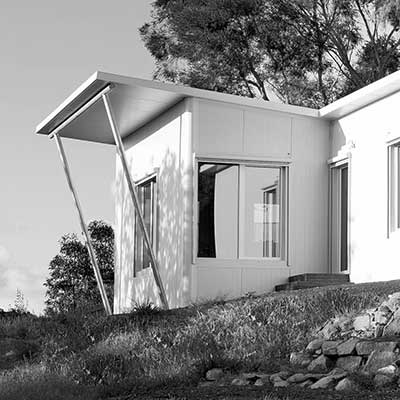
An interesting building and design conference was recently held in Melbourne. Guest speakers included architects, builders, engineers and building physics experts from Germany, the US and the UK.
It is called the International Passive House Standard, otherwise known as the Passivhaus Standard.
The term “passive house” conjures up all sorts of things, and some have suggested that it should be changed, because the term does not properly indicate the radical, transformational nature of the standard.
What does passive house standard mean? Passive as in lazy or inactive? How can “passive” be a good trait in a house?
And what about the term “house?” Does the standard only apply to homes?
These questions were squarely faced by presenters.
First of all, Elrond Burrell, UK architect with Architype and passive house blogger, emphasised that this building standard is about creating comfort and health while using the least energy.
Comfort and health were the drivers of this standard. Instead of freezing in winter, breathing in contaminated moist air, living with mould, or overheating, dealing with constant drafts, or cold, overconditioned spaces, it was actually possible to live in a building that had none of these things.
Imagine that!
Well that’s what Dr Wolfgang Feist from Germany, and professor Bo Adamson from Sweden, imagined over 25 years ago.
And it works.
So we know that any building that delivers us drafts, condensation, mould, discomfort and erratic temperatures is ignoring over 25 years of research.
Go figure.
Raphaël Vibert, civil engineer with Herz & Lang GmbH in Germany, certified passive house designer and accredited passive house certifier, also spoke at the conference. Vibert has been involved in massive commercial buildings and multi-residential buildings – all certified passive “houses” and all with proven results for indoor air quality, health, comfort and low energy use.
Regarding the threat of climate change, Vibert quoted the UN President who has said “there is no plan B because there is no planet B.”
This is why more and more places, like Brussels, are not only embracing the Passive House Standard, but mandating it.
Several presenters emphasised that we need to optimise the structure or envelope of buildings rather than just tacking on more and more building services, or solar panels. We can do buildings that use less energy, and that’s a good outcome, because “the energy which has not been consumed is the cheapest.”
Put simply, Vibert said, “Passive House is the best way to achieve the climate change objectives.”
It is “the most cost effective building standard,” and “energy efficiency is more important than ecological construction materials.”
He explained that a passive house building stays warmer or cooler than the external uncomfortable temperatures, as desired, “without having to make any active correction.”
Glenn Murdoch, from Vicus Design Group in New Zealand, gave a telling summary of new construction post-earthquake in Christchurch. Thousands of buildings have been built in recent years.
Of these, 99 per cent are not passive, and 99 per cent of them generate much more energy than they need to. This is a wasted opportunity, said Murdoch.
The same could be said of every opportunity that we waste when we design, build and retrofit ordinary inefficient buildings.
I find it hard not to be disheartened. I am planning to go to Darmstadt in April, and will be privileged to present on our innovative, fast build, low maintenance Superpod® system. Darmstadt is hosting the 20th International Passive House Conference.
There will be much to learn, much to inspire, and much reckoning to do. Each of us can only do what we can do in this life, for ourselves, for others, for future generations.
What impact do I have? What impact do you have?
The only ethical building performance standard is the International Passive House Standard. I hope we can realise it more quickly, and on a bigger scale, than in the last 25 years.





